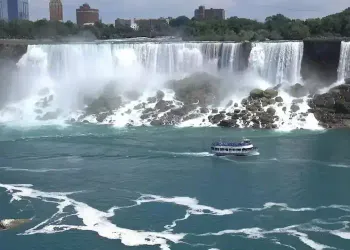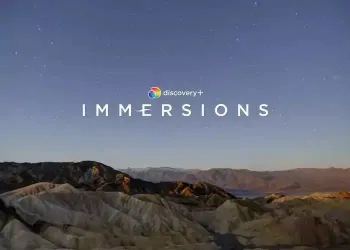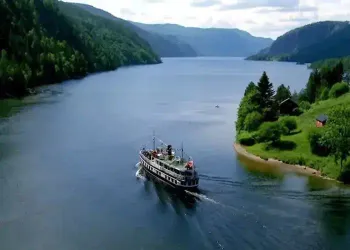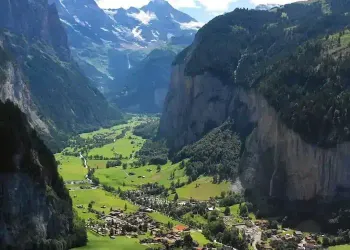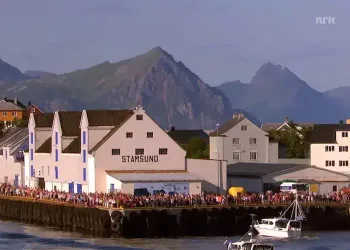Journey Of Calm: Discovering the World Through Slow... TV
Discover the serene world of Slow Television, where the beauty of real-time, tranquil scenes captivates & relaxes. Immerse yourself in mesmerizing journeys through nature, life, in wonderous places from all around the globe. Perfect for unwinding, meditation, or simply enjoying a moment of peace...
Introduction: The Antidote to Fast-Paced Media
In a fast-paced world where every moment is a race against time, there
exists a counter-cultural movement known as "slow TV." This unique
genre has captivated audiences worldwide by offering a departure from
the rapid-fire pace of modern life. Slow Television, often characterized by
its lengthy, unedited broadcasts of mundane activities, journeys, or
events, serves as a form of meditative entertainment that challenges
our conventional notions of television. This essay delves into the
origins, characteristics, & impact of slow TV, examining how it has
become a testament to the human desire for tranquility in an
increasingly frenetic society.
Origins & Characteristics
The roots of slow-TV (Norwegian: sakte-TV) can be traced back to Norway in the early 2000s,
where the concept gained traction as an alternative approach to
traditional programming. The pioneer of this genre was the Norwegian
Broadcasting Corporation (NRK), which aired a seven-hour train journey
from Bergen to Oslo in 2009. This broadcast marked the beginning of a
phenomenon that would soon captivate audiences globally.
Characterized by its deliberate pace, lack of traditional
storytelling, and absence of editing, slow TV defies conventional
television norms. Instead of relying on plot twists or dramatic
narratives, slow TV embraces the beauty of simplicity, often
showcasing mundane yet visually stunning activities such as knitting,
fishing, or woodcutting. The absence of a scripted narrative allows
viewers to immerse themselves in the unfolding scenes, creating a
contemplative and meditative experience.
Key Examples of Slow TV
Bergensbanen - A Slow TV Pioneer
The inaugural slow TV broadcast, Bergensbanen, featured a seven-hour train journey through picturesque Norwegian landscapes. This documentary-style format allowed viewers to experience the scenic beauty of the journey in real-time, emphasizing the joy of the present moment.
Hurtigruten - Minute by Minute
Another notable example is the live broadcast of the Hurtigruten coastal voyage in Norway. This marathon broadcast spanned several days, providing an intimate look at life on a passenger ship as it navigated the stunning Norwegian coastline. The sheer length of the broadcast allowed viewers to appreciate the rhythm of life at a leisurely pace.
National Knitting Evening
In a departure from the typical televised events, NRK aired National Knitting Evening, a 12-hour broadcast showcasing the art of knitting. The broadcast featured knitting enthusiasts engaged in their craft, creating a sense of community and shared appreciation for a simple yet meaningful activity.
Impact & Appeal: Societal Impact & Yearning for Mindfulness
The unique appeal of slow Television lies in its ability to offer a respite from the constant barrage of information & stimuli that characterize modern life. As viewers tune in to these unhurried broadcasts, they find themselves enveloped in a sense of calm & mindfulness. Slow TV becomes a therapeutic escape, allowing individuals to unwind & reconnect with the present moment.
Mindfulness & Well-being
Slow TV has been lauded for its potential impact on mental well-being. By encouraging viewers to slow down and appreciate the beauty of the mundane, it provides a mindful experience that contrasts with the fast-paced nature of contemporary entertainment. The deliberate lack of urgency allows viewers to relax, fostering a sense of tranquility and reducing stress levels.
Cultural Exploration
Slow TV also serves as a cultural exploration, offering audiences a window into the everyday lives of people in different parts of the world. Whether it be the serene landscapes of Norway, the bustling activity on a coastal voyage, or the communal spirit of a knitting event, slow TV fosters a cross-cultural understanding by highlighting the beauty in the ordinary.
Community Engagement
The live, unedited nature of slow TV broadcasts fosters a unique sense of community engagement. Viewers often share their experiences and observations in real-time through social media, creating a shared viewing experience that transcends geographical boundaries. This communal aspect adds a social dimension to slow TV, turning it into a shared, collective event.
In Conclusion
Slow TV stands as a testament to the human desire for simplicity, tranquility, & mindfulness in an era dominated by rapid technological advancements and information overload. By embracing the unhurried and unscripted, slow TV challenges the conventions of traditional entertainment, offering a refreshing alternative that resonates with a global audience. As we navigate the complexities of the modern world, the enduring appeal of slow TV suggests that, perhaps, there is wisdom in slowing down and appreciating the beauty inherent in the ordinary moments of life.
